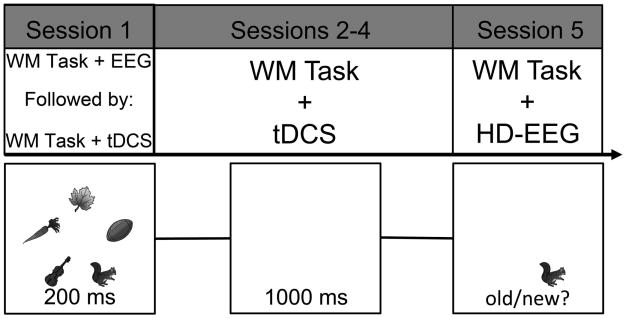Figure 1.
Top) Timeline for the Experiment. Sessions 1 and 2 both took place on the same day (Monday). The first session acted as a baseline for performance while HD-EEG recorded cortical activity prior to the application of tDCS. Sessions 2-4 had the WM change detection task take place following the application of tDCS. Session 5 (Friday) had participants complete the WM change detection task while the HD-EEG recorded cortical activity and there was no tDCS prior to task performance. In total, participants completed the WM change detection task six times between the four tDCS sessions and the two HD-EEG sessions. Bottom) WM change detection task paradigm used in the Experiment. Five grayscale items appeared for 200 ms followed by a 1000 ms delay. Participants were then required to judge the probed item as old or new.

